1 oz Combier Orange Liqueur
1/2 oz Aperol
3/4 oz Lime Juice
3 inch swath Grapefruit Peel
Shake with ice and strain into a salt-rimmed Collins glass filled with ice. Top with ~2 oz soda water and garnish with a grapefruit twist.

quality versus quantity does not have to be a winner-take-all proposition.

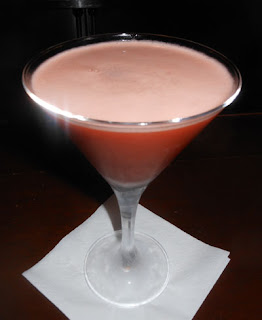







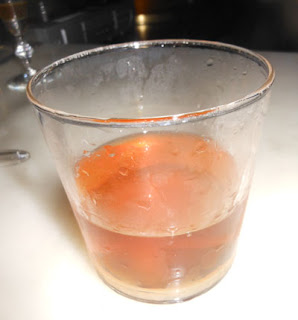



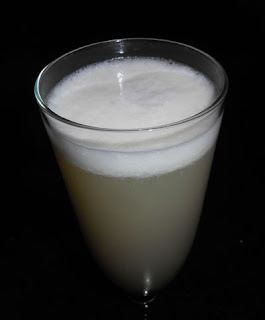



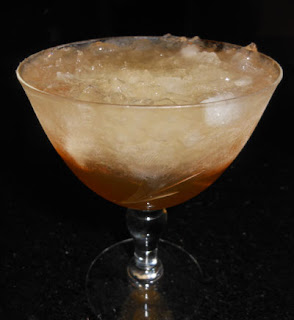
 This month's Mixology Monday theme, "From Crass to Craft" (MxMo LXXI), was picked by Scott Diaz of the Shake, Strain, & Sip blog. Scott's challenge was, "The evolution of the cocktail has been a wondrous, and sometimes, frightful journey... But with all this focus on 'craft' ingredients and classic tools & form, it seems we have become somewhat pretentious... Remember, the bar was created with pleasing one particular group in mind: the guest. As such, this month’s MxMo theme... will focus on concocting a craft cocktail worthy of not only MxMo but any trendy bar, using dubious and otherwise shunned ingredients to sprout forth a craft cocktail that no one could deny is anything less... So grab that bottle of flavored vodka, Jägermeister, cranberry juice, soda, neon-colored liqueur, sour mix, or anything else deemed unworthy of a craft cocktail, and get mixin'!"
This month's Mixology Monday theme, "From Crass to Craft" (MxMo LXXI), was picked by Scott Diaz of the Shake, Strain, & Sip blog. Scott's challenge was, "The evolution of the cocktail has been a wondrous, and sometimes, frightful journey... But with all this focus on 'craft' ingredients and classic tools & form, it seems we have become somewhat pretentious... Remember, the bar was created with pleasing one particular group in mind: the guest. As such, this month’s MxMo theme... will focus on concocting a craft cocktail worthy of not only MxMo but any trendy bar, using dubious and otherwise shunned ingredients to sprout forth a craft cocktail that no one could deny is anything less... So grab that bottle of flavored vodka, Jägermeister, cranberry juice, soda, neon-colored liqueur, sour mix, or anything else deemed unworthy of a craft cocktail, and get mixin'!"
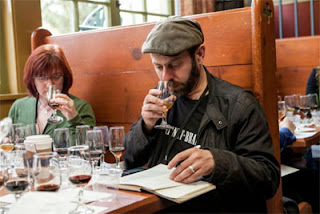
Adlon CocktailOn the nose, the Jägermeister and dry vermouth donated an herbal, minty, and almost gentian aroma that worked well with the pineapple notes. The pineapple continued on into the sip where it paired elegantly with the liqueur's caramel. Next, the swallow offered herbal and pineapple flavors with a lingering mint-like note similar to the one from the nose.
• 1 1/2 oz Jägermeister
• 3/4 oz Pineapple Juice
• 3/4 oz Dry Vermouth (Noilly Prat)
Shake with ice and strain into a cocktail glass.









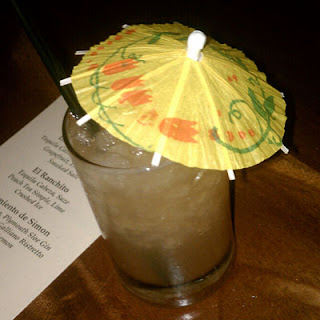
• Fords Gin - Simon's namesake gin was produced in collaboration with the distiller at Thames Distillers in London. In the botanical mix besides juniper are corriander, bitter orange peel, lemon peel, grapefruit peel, jasmine flowers, orris, angelica, and cassia, and their website in a brave degree of honesty actually lists the percentages of each botanical by weight in the infusion. On the nose, the gin reminded me a lot of Bombay Sapphire, No. 3, and Nolet's gin due to angelica or orris in conjunction with the juniper. At first the gin was rather earthy and low in citrus when tasted neat; however, after adding a splash of water to this 90 proof spirit, grapefruit peel and cinnamon suddenly became quite apparent.Besides the tasting at the Hawthorne, bartenders Katie Emmerson and Nicole Lebedevitch were mixing up cocktails with the gin. Before the tasting, Jackson Cannon offered me a gin and tonic which was good but hid the gin a bit too much to make a decent call. For a cocktail later, I chose a Martinez and the gin worked well to add extra spice and citrus notes to the mix. I think the gin will appeal the No. 3 and Nolet's crowd more so than the Beefeater or Plymouth set.
• Aylesbury Duck Vodka - This spirit is made from white winter wheat grown on small farms in western Canada and is distilled to 193 proof before being diluted for bottling at 80 proof. Yes, it was vodka, but it was not absolutely flavorless and I enjoyed the light grain notes when tasted neat similar to that in Russian Standard. A few did not enjoy that like I did, but the biggest complaint was a glycerol sweetness and body aspect to it. Compared to a pot stilled spirit, it was slight and I did not really have a problem with this.
• Caña Brava Rum - The rum was made in conjunction with Panamanian distiller Francisco "Don Pancho" Fernandez who is also the maker of Ron de Jeremy. The 86 Co. sought him out for his experiences of making rum in Cuba before Castro and they wanted to make a Cuban-style white rum that would be perfect for Daiquiris. The end result is a rum made from wild sugar cane grown on volcanic soil in Panama, aged up to three years in wood, blended, and stripped clean of color through charcoal filtration. I was hoping for something grassy like I had heard old Cuban rums were, but instead the sugar cane notes were more subtle in this smooth and clean white rum. The vanilla notes from the barrel aging were there but not as robust as say El Dorado 3 Year. Bottled at 86 proof.
• Tequila Cabeza - For all that I found the rum to be on the subtle end of things, the tequila was quite the opposite. The spirit was produced in the Los Altos region of Jalisco, and the Vivanco family opted for cooler, slower winter fermentation to bring forth this extra flavorful style. I enjoyed the spirit for it had more vegetal and fruity notes to it as opposed to many of the tequilas that are on the market. Also bottled at 86 proof.

 Besides the OnTheBar app for mobile phones, the next most useful drink-associated app I have found has been the Untappd beer one. I believe that I first learned of it through a friend's tweet announcing a beer he drank, and I decided to download the app and give it a shot -- especially since there is very little risk in trying out a free application. Here is my impression after trying it out for 6 weeks.
Besides the OnTheBar app for mobile phones, the next most useful drink-associated app I have found has been the Untappd beer one. I believe that I first learned of it through a friend's tweet announcing a beer he drank, and I decided to download the app and give it a shot -- especially since there is very little risk in trying out a free application. Here is my impression after trying it out for 6 weeks.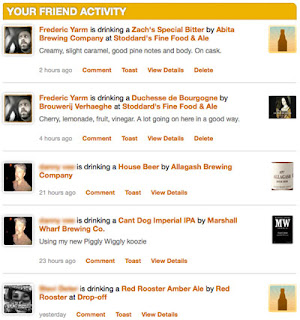

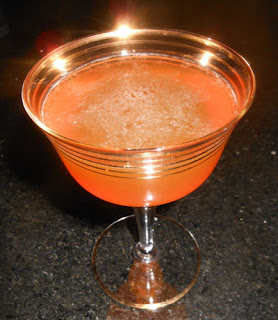

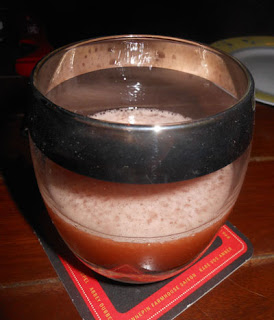
Almost anyone can learn to mix drinks accurately and fast. That is the least of it. I have always believed success behind the bar comes from an ability to understand the man or woman I am serving, to enter into his joys or woes, make him feel the need of me as a person rather than a servant.Regan expounded on that quote by trying to figure out why a person is there at the bar and what they are trying to get out of the experience. From that, a mindful bartender can determine how much or how little interaction is desired and of what type. Likewise, Jimmie spoke of trying to size up a customer to determine if they want to be alone or are really looking for companionship. Jimmie also made observations on the effects of alcohol on people:
Liquor always has one of three effects on people. Upon a few it brings a deep depression, because, I suppose, there is some sorrow there already. On the normal person, though, the effect is either to make him amorous or belligerent, and he or she can jump from one state to the other without difficulty.This is an added dimension to the earlier point -- it is not just why a person is there at the bar, but how the experience can shape the side that comes out that night. Jimmie offered tales and tactics of how to diffuse fights, introduce people, and offer free drinks and other distractions to make the evening go smoothly. "Diplomacy," he explained, "is a first requisite, without which a man can never be a success in anything but a very formal bar." Moreover, keeping the customer satisfied is part of the game both with the bartender experience as well as with the fellow clientele. In dealing with drinkers, Jimmie learned to handle drunks from being drunk himself. His tactic was, "I have sympathy for them, and they respond to that treatment like no other. Criticism always makes them worse." Regan took it a step further by explaining certain phrasings that avoids the criticism aspect, such as "I wonder if you could think about lowering your voice just a little, please" instead of telling them bluntly to quiet down and stop annoying everyone.

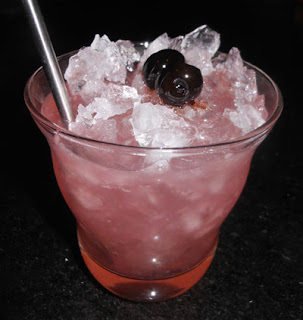
White Lion (1935)
• 1/2 glass Jamaican Rum
• 1/4 glass Curaçao
• 1/4 glass Raspberry Syrup
• Juice of Lime or 1/2 Lemon
Shake with ice and strain into a tumbler filled with shaved ice. Garnish with fruit.






 The 2017 collection of 855 drink recipes, bartender tributes, and essays on hospitality from CocktailVirgin's Frederic Yarm. Available at Barnes and Noble and Amazon.
The 2017 collection of 855 drink recipes, bartender tributes, and essays on hospitality from CocktailVirgin's Frederic Yarm. Available at Barnes and Noble and Amazon. The 2012 collection of 505 drink recipes, techniques, and Boston bar recommendations from Frederic Yarm. Available at Amazon and Barnes and Noble.
The 2012 collection of 505 drink recipes, techniques, and Boston bar recommendations from Frederic Yarm. Available at Amazon and Barnes and Noble.